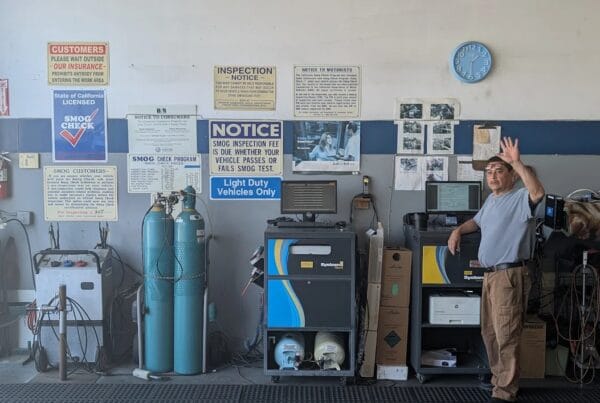If you’ve ever had the check engine light illuminate on your vehicle’s dashboard, you may wonder whether passing a smog check is still possible. At EZ Smog Check, we understand the concern that arises when the check engine light is on.
- Understanding the Check Engine Light: The check engine light, also known as the malfunction indicator lamp (MIL), is a warning indicator that alerts drivers to potential issues with the vehicle’s engine or emissions system. When the check engine light illuminates, it indicates that the vehicle’s onboard diagnostic system (OBD-II) has detected a problem that requires attention. Common issues that trigger the check engine light include faulty oxygen sensors, catalytic converter problems, and engine misfires.
- Impact on Smog Check Results: In most cases, a vehicle with the check engine light illuminated will fail the smog check. The presence of an active check engine light indicates that the vehicle’s emissions control system is not functioning properly, which can lead to increased emissions and decreased fuel efficiency. During the smog check, the vehicle’s onboard diagnostic system (OBD-II) is scanned for trouble codes, and the presence of an active check engine light will result in an automatic failure.
- Addressing the Issue: If your vehicle’s check engine light is on, it’s essential to address the underlying issue before attempting a smog check. Start by having the vehicle’s diagnostic trouble codes (DTCs) retrieved using a diagnostic scanner. Once you’ve identified the specific problem, consult with a qualified mechanic or technician to diagnose and repair the issue. Common repairs may include replacing faulty sensors, repairing exhaust leaks, or addressing engine misfires.
- Clearing the Check Engine Light: After addressing the underlying issue causing the check engine light to illuminate, it’s necessary to clear the trouble codes and reset the check engine light. This can be done using a diagnostic scanner or by disconnecting the vehicle’s battery for a short period. Once the check engine light has been reset, it’s essential to drive the vehicle for a certain number of miles under various driving conditions to allow the onboard diagnostic system to complete its readiness tests.
- Importance of Regular Maintenance: To prevent issues with the check engine light and ensure compliance with emissions standards, it’s crucial to prioritize regular maintenance and vehicle inspections. Routine maintenance, such as replacing worn-out components and addressing minor issues promptly, can help prevent more significant problems from occurring and ensure that your vehicle remains in optimal condition.
While it’s not possible to pass a smog check with the check engine light on, addressing the underlying issue and clearing the trouble codes can help restore your vehicle’s compliance with emissions standards. At EZ Smog Check, we’re here to assist you with all your smog check needs and provide expert guidance on addressing check engine light issues. Schedule an appointment with us today and let us help you keep your vehicle running smoothly and efficiently.



